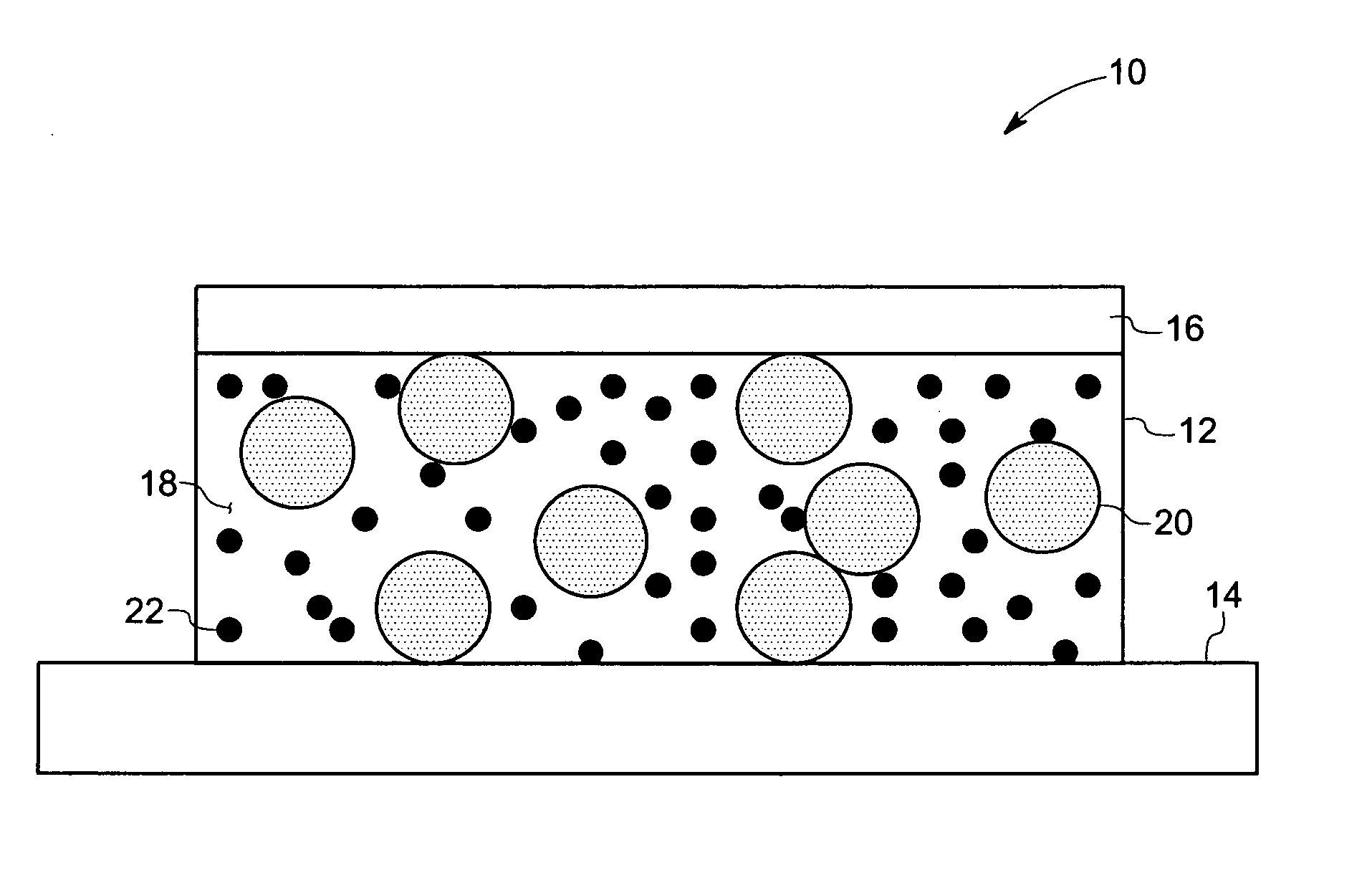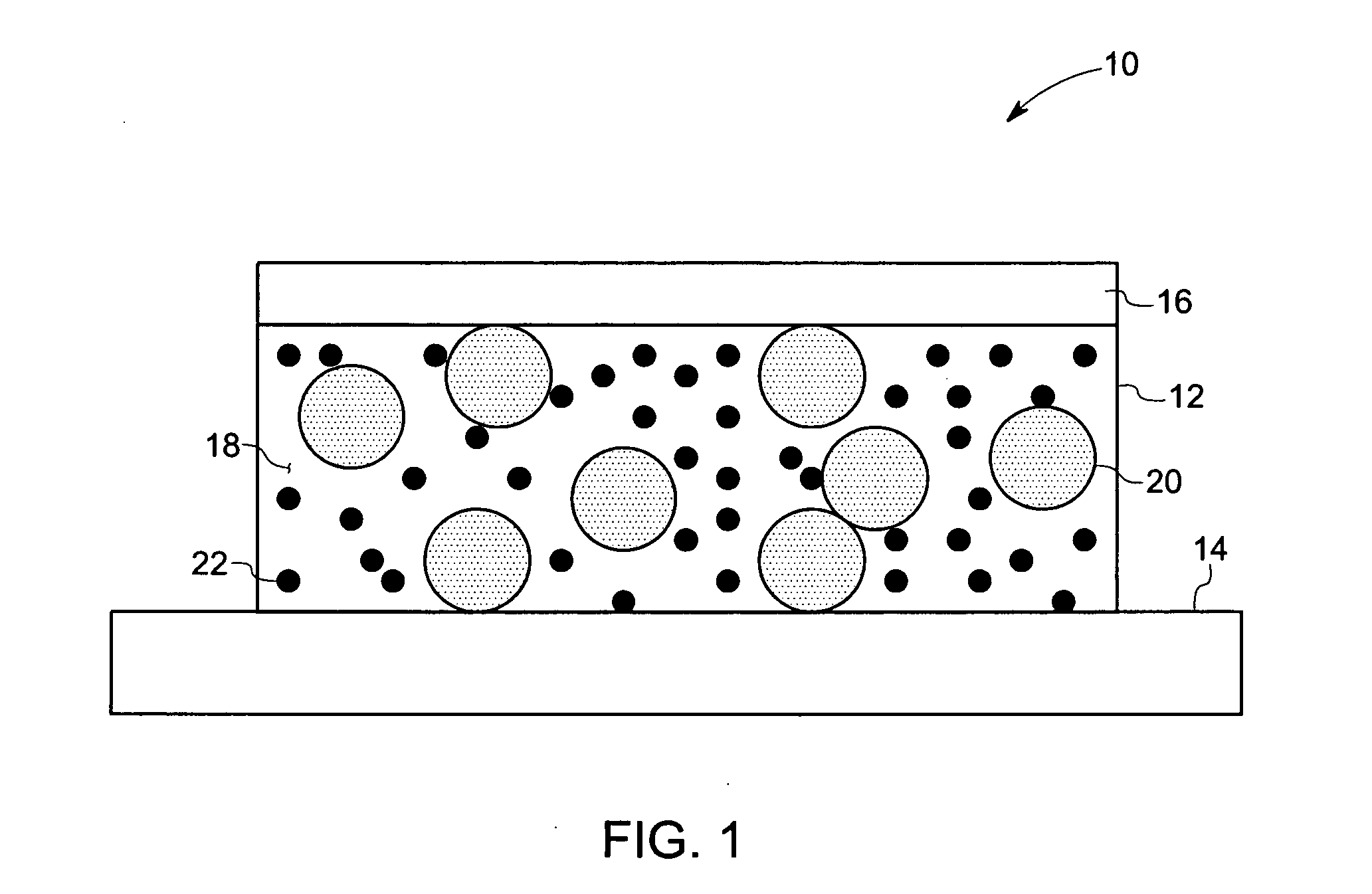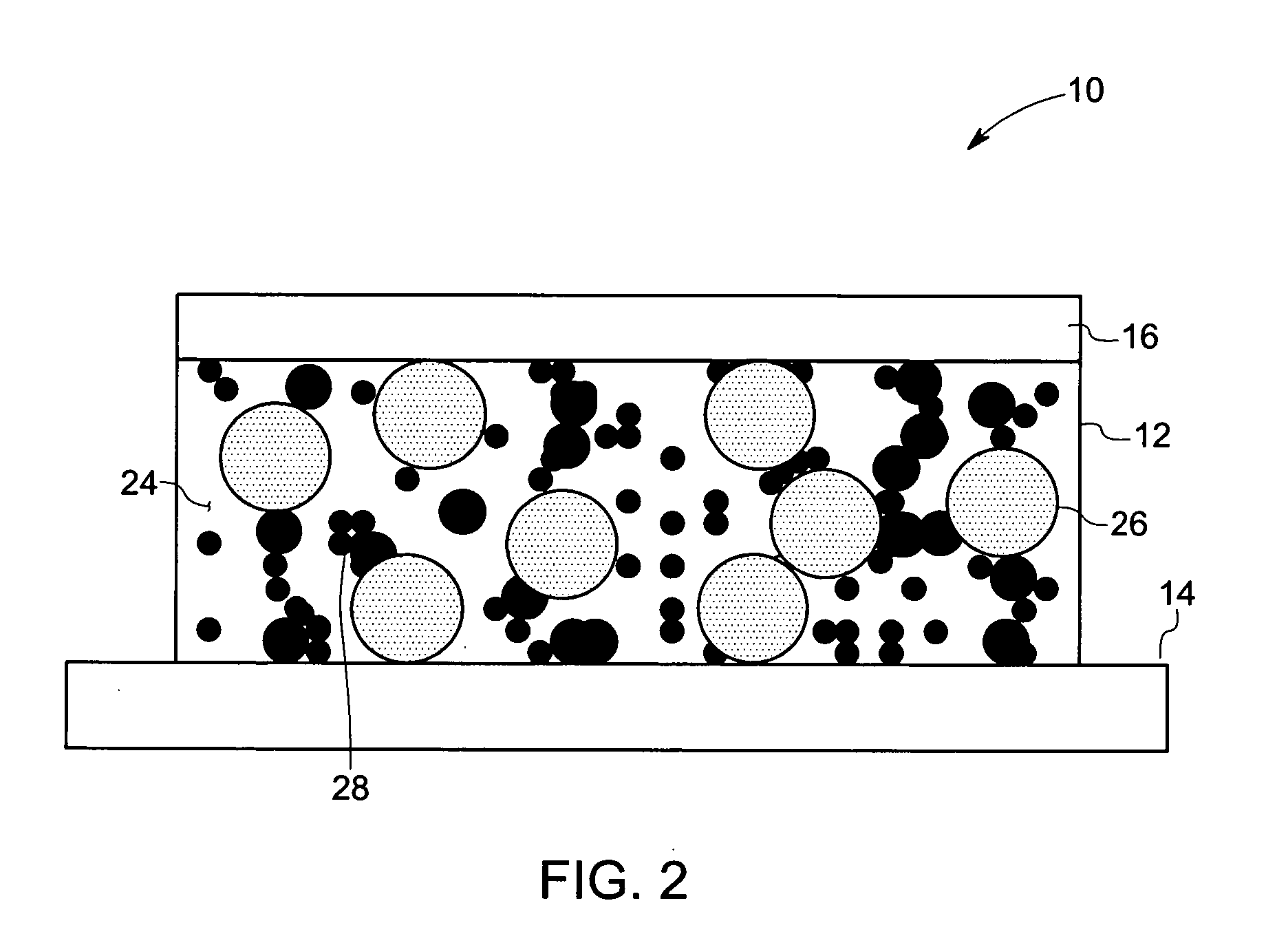Electrically conductive adhesives
a technology of electrically conductive adhesives and adhesives, which is applied in the direction of non-metal conductors, conductors, dielectric characteristics, etc., can solve the problems of high processing temperature of lead-free alloy solders, new challenge for reliable assembly of microelectronics components, and high material cos
- Summary
- Abstract
- Description
- Claims
- Application Information
AI Technical Summary
Benefits of technology
Problems solved by technology
Method used
Image
Examples
example 1
[0054]
Component-TypeGramsVinyl polymer-MviD150Mvi0.819Silicone hydride-MD50DH50M0.145Nanosilver0Micron Silver filler7.33Property (units)MeasurementViscosity (P) @ 20 rpm10.4Settling timeWithin 24 hrs
example 2
[0055]
Component-TypeGramsVinyl polymer-MviD150Mvi0.819Silicone hydride-MD50DH50M0.145Nanosilver0.4Micron Silver filler6.5Property (units)MeasurementViscosity (P) @ 20 rpm10Settling timeWithin 24 hrs
example 3
[0056]
Component-TypeGramsVinyl polymer-MviD150Mvi0.819Silicone hydride-MD50DH50M0.145Nanosilver0.8Micron Silver filler6.3Property (units)MeasurementViscosity (P) @ 20 rpm21.3Settling timeWithin 7 days
PUM
| Property | Measurement | Unit |
|---|---|---|
| Temperature | aaaaa | aaaaa |
| Temperature | aaaaa | aaaaa |
| Percent by mass | aaaaa | aaaaa |
Abstract
Description
Claims
Application Information
 Login to View More
Login to View More - R&D
- Intellectual Property
- Life Sciences
- Materials
- Tech Scout
- Unparalleled Data Quality
- Higher Quality Content
- 60% Fewer Hallucinations
Browse by: Latest US Patents, China's latest patents, Technical Efficacy Thesaurus, Application Domain, Technology Topic, Popular Technical Reports.
© 2025 PatSnap. All rights reserved.Legal|Privacy policy|Modern Slavery Act Transparency Statement|Sitemap|About US| Contact US: help@patsnap.com



